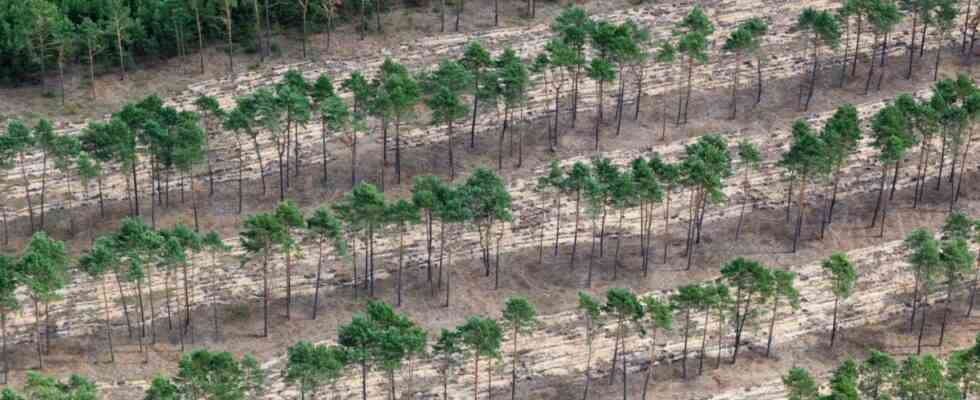Trees have occasionally passed in front of my balcony window this week. No, not logs for the sawmill, but living trees, with leaves, roots and all. You have to know that I live in a new development area that has had practically no trees for a few years, but has seen a lot of excavators, cranes and other large equipment. But for a few days, truckloads of deciduous trees have been arriving here so that after many tall buildings, a park can finally be laid out. Workers then use forklifts to drive these trees past my window to where they will be planted.
The sight of wandering trees made me think of a children’s book about “Mog the Cat”. In it, Mog’s owner carries home a Christmas tree, which scares Mog so much (“Trees don’t walk!”) that he flees onto the roof. Luckily I don’t have a cat.
But trees can also be viewed critically for other reasons. This is shown by the recently published “Land Gap Report”, who deals with afforestation for climate protection. Many governments are increasingly relying on planting trees in their climate plans. Because these bind carbon from the air during their growth with the help of photosynthesis, i.e. remove greenhouse gases from the atmosphere. Such climate protection measures are therefore also referred to as “land-based CO₂ removal” (CDR).
It takes decades for newly planted trees to help the climate
For the new report, scientists from the University of Melbourne, among others, took a closer look at these promises – and added them together: In order to plant as many trees as the national climate targets envisage, an area of 1.2 billion hectares would be necessary. That is almost four times the area of India and almost as much land as is available for growing food worldwide. The researchers therefore estimate that other uses would probably have to take a back seat to more than half of this targeted afforestation area. Smallholders or indigenous groups would have to give up land, which raises numerous ethical and social questions.
Overall, the researchers assess the afforestation areas targeted on paper as unrealistically high. And they criticize the fact that many governments would only use these mostly vague plans for future carbon removal as a fig leaf, so that they hardly have to change anything in the consumption of fossil fuels in the short term. In any case, fossil emissions cannot be offset one-to-one with carbon stored in ecosystems. It takes decades for newly planted trees to bind the necessary amounts of carbon. On the other hand, the tree plantations, which are often created as monocultures, do not offer the same degree of biodiversity and are also significantly more susceptible to extreme weather than existing forests.
According to the researchers, protecting them – especially primary jungles – would be better than replanting large areas. The restoration of badly damaged forest areas is also promising, which could amount to more than 500 million hectares. Most importantly, future carbon removals should not distract from cutting emissions in the present.
Unfortunately, I can’t spontaneously answer whether the newly planted trees in my neighborhood also improve any climate balance sheets. I’m still happy about each and every one of them.
This text is from the weekly Newsletter climate friday you here for free can order.

